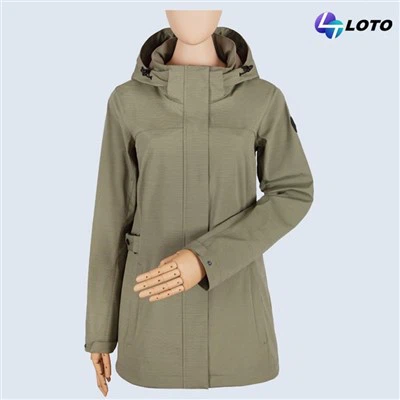Introduction: Why Factory Type Matters in Garment Manufacturing Quality
In today's competitive apparel market, choosing the right garment manufacturer can make or break a brand's success. For B2B buyers and apparel companies, factory type is a critical-but often overlooked-factor that directly impacts product quality, delivery timelines, and overall production efficiency.
Traditional garment factories often operate on legacy systems, with minimal upgrades in infrastructure and technology. While they may offer low-cost production, this often comes at the expense of quality consistency, scalability, and environmental standards.
On the other hand, modern garment factories are engineered for high performance. With a focus on automation, clean environments, skilled labor management, and efficient layouts, these facilities are built to meet today's demand for customized, high-quality production at scale.
This article will explore the core differences between traditional and modern garment manufacturing facilities, using Hebei Loto Garment's advanced factory as a benchmark for modern standards. Through this comparison, B2B buyers will gain a clear understanding of what to prioritize when choosing a manufacturing partner.
Factory Structure & Infrastructure: Traditional Garment Factories vs. Modern Facilities
Traditional Garment Factories
Traditional clothing factories are typically housed in older industrial buildings with minimal renovation. These facilities often suffer from:
Poor spatial layout:
Limited production flow and crowded working areas reduce operational efficiency.
Outdated equipment:
Manual sewing machines, no digital cutting, and little to no production automation.
Basic ventilation and lighting:
Compromising worker comfort and product hygiene.
Limited compliance:
May lack certifications like BSCI or SLCP, affecting brand reputation.
While such factories may appear to offer lower costs, their aging infrastructure frequently leads to slower production cycles, higher defect rates, and limited transparency in operations.
Modern Facilities (e.g., LotoGarment)
Modern garment factories, like the newly expanded facility of Hebei Loto Garment, represent a significant evolution in apparel manufacturing:
Purpose-built layout:
Designed to optimize workflow, with dedicated cutting, sewing, inspection, and packing zones.
Advanced infrastructure:
Bright, clean environments with industrial-grade ventilation, insulation, and energy-saving systems.
Certified compliance:
Facilities built to meet BSCI, SLCP, and other international audit standards.
Sustainable design:
Integration of green building practices such as solar-powered water heating and waste management systems.
Loto's modern facility not only enhances working conditions but ensures that every step of the manufacturing process is aligned with global quality and safety expectations.
Production Capacity and Layout: Old-School Plants vs. LotoGarment's Modern Workflow
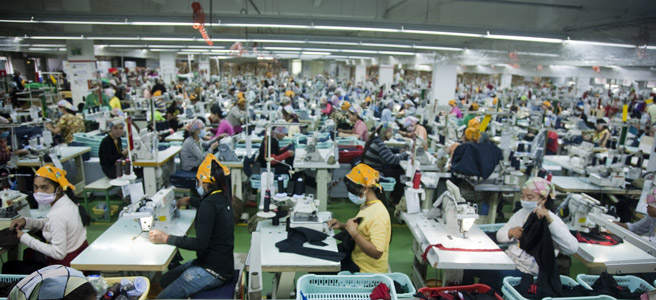
Traditional Production Layouts
Older garment factories often follow outdated, linear production models. Workstations are manually managed, and garments are physically carried between stations. This creates:
- Disorganized flow that slows down productivity.
- Higher risk of garment contamination due to floor contact or human handling.
- Limited scalability-factories struggle to ramp up production quickly or switch product types efficiently.
- Inconsistent work balance, as workers manually track production steps.
These inefficiencies not only impact lead times but also increase the chance of errors, especially on large-scale orders.
LotoGarment's Modern Workflow Optimization
In contrast, Hebei Loto Garment has implemented a cutting-edge Garment Hanging Production System-a hallmark of highly efficient, modern apparel factories.
- Fully suspended workflow: Garments move overhead via a rail system, minimizing handling and preventing contact with floors or unclean surfaces.
- Real-time tracking: Each garment's status is traceable through the digital system, improving transparency and production control.
- Balanced workload distribution: The system automatically directs work to the next available operator, ensuring continuous flow and eliminating bottlenecks.
- Clean and organized workspace: The hanging system dramatically reduces workspace clutter, maintaining a sanitary and streamlined environment across the factory floor.

In combination with its two-factory campus and over 300 skilled workers, LotoGarment's optimized layout and production technology allow it to maintain a monthly output of over 100,000 pieces, while ensuring speed, accuracy, and cleanliness at every stage of manufacturing.
Technology & Automation: Manual Labor vs. Smart Garment Production Systems
Traditional Factories: Manual-Driven, Low-Tech Processes
Most traditional garment factories still rely heavily on manual labor and basic machinery:
- Hand-cutting fabric leads to inconsistent sizing and slower output.
- Standard sewing machines without automation limit stitching precision.
- No data tracking systems, making it difficult to trace defects or production issues.
- Higher reliance on human judgment, which increases error rates.
- These facilities may offer low start-up costs, but the lack of automation severely limits scalability, repeatability, and production speed-especially on complex garments like technical outerwear.

LotoGarment's Advanced Production Technologies
LotoGarment has invested heavily in a fully integrated, high-tech production line designed for precision, speed, and consistency.
Key automation technologies include:

Automatic Fabric Cutting System
Digitally controlled cutting machines reduce fabric waste and increase precision.
Able to process complex pattern layouts quickly-ideal for high-spec custom garments.

Sewing Template Machines (Template Technology)
Speeds up repetitive sewing tasks while maintaining consistent quality.
Minimizes operator variability-ideal for details like collars, pockets, and cuffs.
Significantly boosts sewing efficiency and accuracy, especially for bulk production.

Intelligent Down Filling System
Precisely fills each chamber of the garment with the correct volume of down.
Guarantees lightweight warmth with no clumping or overfilling.
Reduces material waste, improves comfort, and enhances insulation uniformity.
With these technologies in place, LotoGarment achieves stable quality, fast lead times, and reduced error rates, giving brands a production partner that can keep pace with both innovation and volume demands.
Factory Environment & Sustainability: Outdated Practices vs. Green Manufacturing
Traditional Factories: Low Investment in Environment or Sustainability
In many older garment factories:
- Working conditions may be overcrowded, poorly ventilated, or inadequately lit.
- Sanitation is often a low priority, leading to dust accumulation and product contamination.
- Energy efficiency and waste management are rarely addressed, leading to high operational costs and environmental impact.
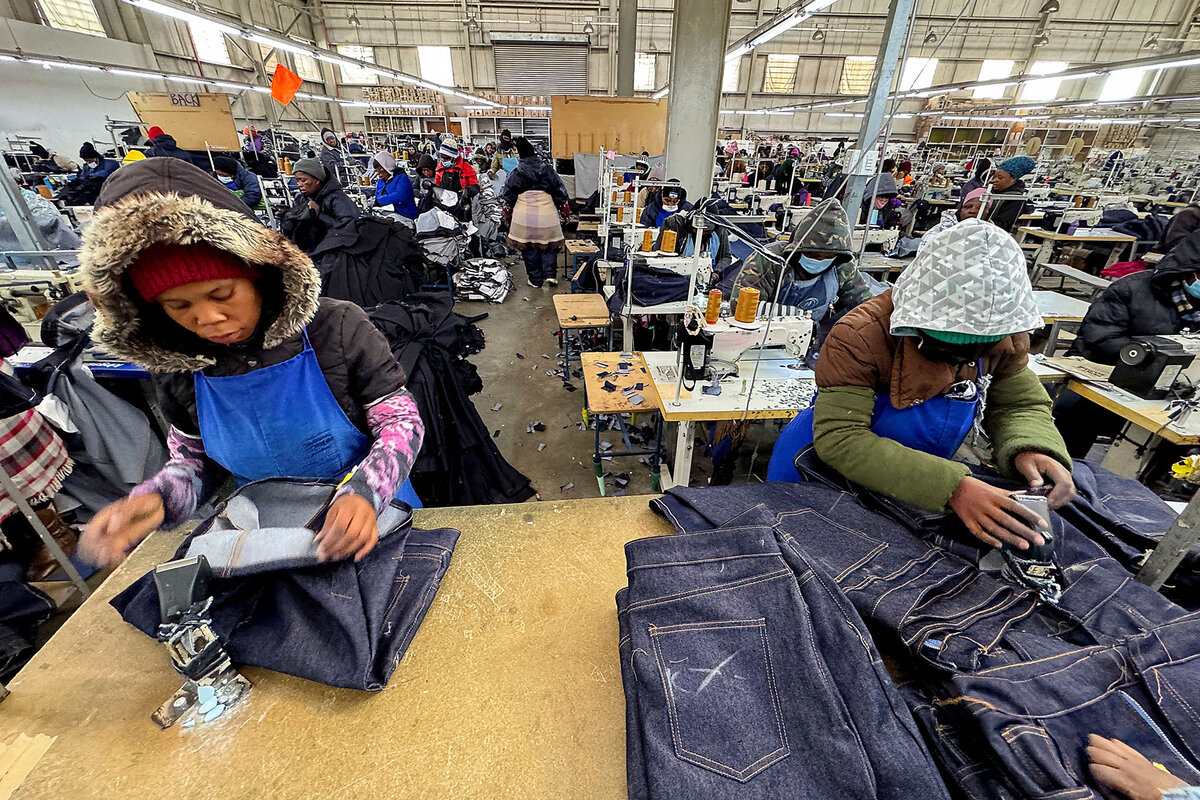
These issues not only affect worker morale but also pose risks to product quality-especially for brands focused on sustainability or ethical sourcing.
LotoGarment: Clean, Smart, and Eco-Conscious
Hebei Loto Garment integrates modern environmental engineering into every aspect of factory design and operation:
Clean, Zoned Production Layout
Every department (cutting, sewing, filling, inspection, packaging) is physically and operationally separated.
Reduces cross-contamination, improves workflow clarity, and supports high hygiene standards.
Energy-Efficient Systems
Equipped with solar-powered water heating systems.
Uses energy-saving lighting and ventilation, reducing carbon footprint.
Waste Reduction and Management
Down and fabric waste are minimized through intelligent systems.
Recycling and material management protocols ensure environmentally responsible operations.
Audit & Certification Compliance
Fully certified under BSCI, SLCP, and more, proving commitment to both sustainability and social responsibility.
By contrast to traditional factories, Loto's factory reflects not only technological modernization but also a progressive environmental and ethical mindset, crucial for global B2B clients.
Skilled Workforce and Training: Traditional Experience vs. Structured Talent Development
Traditional Factories: Reliance on Informal Skill Transfer
Older garment factories often rely on:
- Long-tenured workers passing down skills informally.
- Little to no standardized training or technical onboarding.
- Limited understanding of new machinery or process optimization.

This can lead to inconsistent results, especially when scaling operations or introducing new products.

LotoGarment: Structured Workforce Development
LotoGarment takes a strategic approach to labor quality:
- Employs 300+ trained production staff, supported by line supervisors and QC specialists.
- Conducts ongoing technical training in template sewing, digital cutting, and product-specific assembly.
- Introduces lean production concepts to optimize line balance and reduce waste.
- Facilitates knowledge-sharing between departments, improving collaboration and process control.
The result is a workforce that is not only technically skilled but also aligned with modern manufacturing standards-an essential asset for consistent quality and responsive production.
Quality Control Standards: Visual Checks vs. Integrated QA Systems

Traditional Factories: Basic Visual Inspections
In many traditional garment factories, quality control (QC) is limited to:
- Manual visual inspections at the end of the line.
- Limited documentation of defects or production data.
- Reactive problem-solving-issues are often found too late.
This approach may catch obvious flaws but lacks consistency, especially across large orders or complex designs.
LotoGarment's Integrated Quality Assurance System
LotoGarment operates a multi-stage QC system built for proactive quality management:
- In-line inspections at every major stage: cutting, sewing, filling, and packing.
- Dedicated QA teams and inspection zones ensure that standards are met in real time.
- Use of measurement tools, tension testers, and digital garment spec templates to ensure product accuracy.
- Feedback loops between production and QA for fast issue resolution and continuous improvement.
This structured QA system ensures high consistency and low defect rates, making Loto a reliable partner for premium outerwear and customized garments.
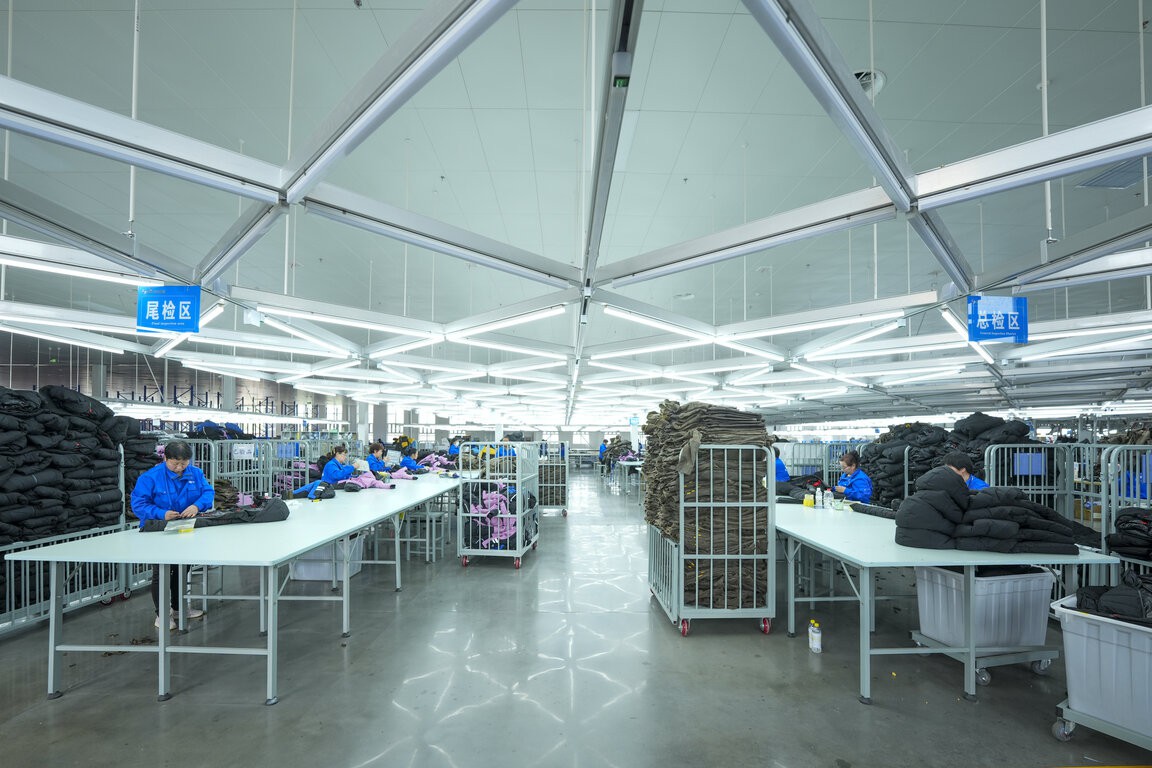
Customization Capabilities: Limited Flexibility vs. Scalable Custom Garment Solutions
Traditional Factories: Rigid Processes, Low Adaptability
Traditional clothing factories often:
- Prefer standardized, repetitive orders due to their manual workflows.
- Struggle to adapt to design revisions or multiple SKUs within a production run.
- Lack CAD systems, meaning every new style requires slow, manual pattern creation.
This inflexibility can frustrate brands seeking agility and variety.

LotoGarment: Built for OEM Flexibility and Customization

Modern brands require both speed and specificity-this is where LotoGarment excels:
- Uses CAD and digital pattern systems for fast prototyping and revisions.
- Supports a range of fabrics, trims, and construction types for tailored garment development.
- Equipped to handle low-MOQ trial orders and large-volume production with the same precision.
- Maintains a structured tech pack review and sample process for customized orders.
Whether for fashion-forward outerwear or technical apparel, Loto offers scalable customization without sacrificing quality or timeline-something most traditional factories cannot match.
Client Collaboration & B2B Readiness: Informal Communication vs. Professional OEM Support
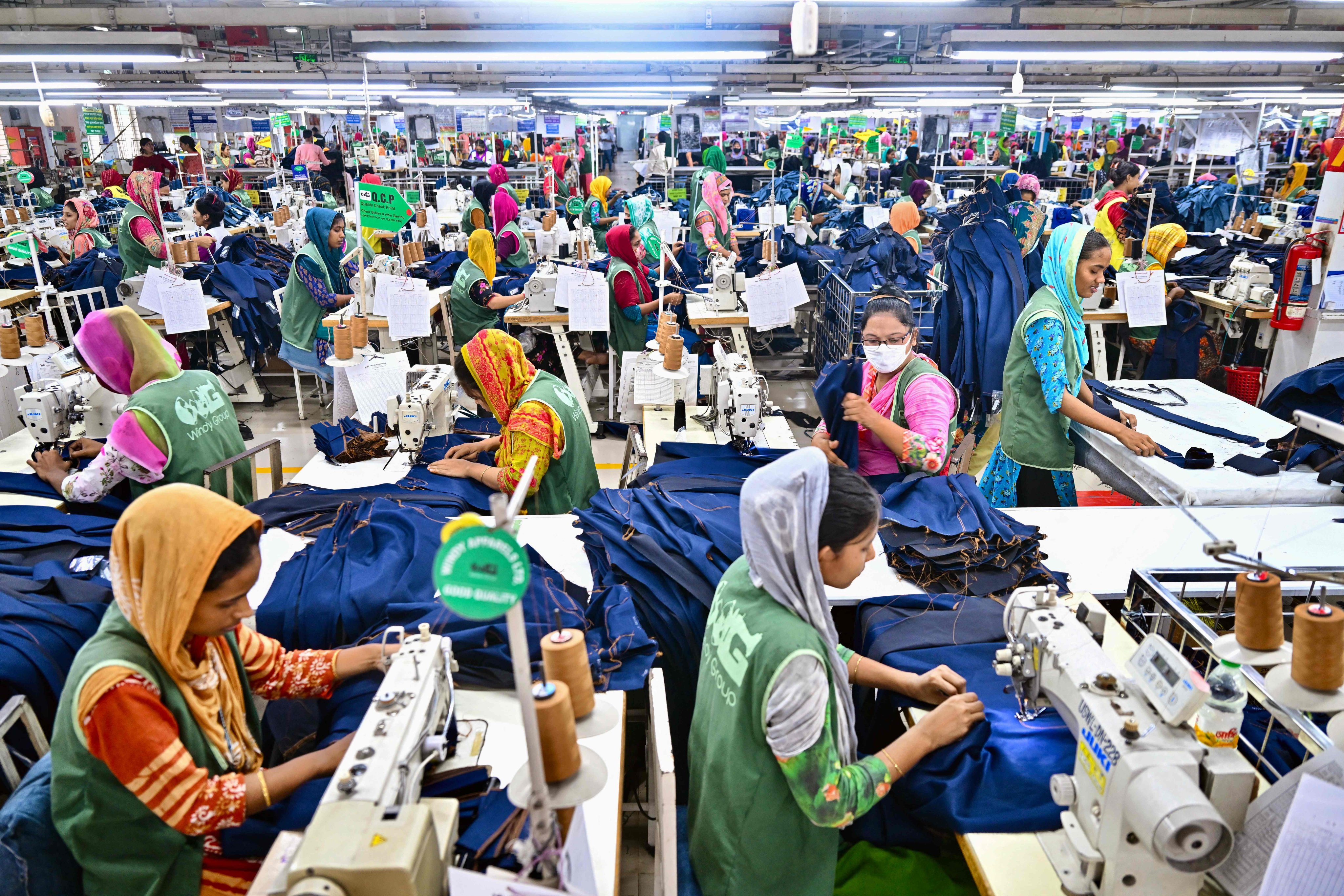
Traditional Factories: Limited Communication Channels
Traditional garment suppliers may not have:
- English-speaking client service teams.
- Dedicated project managers for each client.
- Systems for timely updates, production tracking, or digital documentation.
Professional experience in handling OEM/ODM contracts.
This creates risk for brands, particularly when managing complex product specs or international shipping timelines.
LotoGarment: Strategic, Transparent B2B Support
LotoGarment is structured to serve global B2B buyers with OEM-level precision and transparency:
- Dedicated English-speaking sales and project management team.
- Clear process from sampling to delivery, including tech pack analysis, material sourcing, and production planning.
- Digital production tracking with transparent timelines and status reporting.
- Experience with global logistics and compliance documentation, supporting smooth cross-border transactions.

This level of professional communication reduces misunderstandings, ensures consistent execution, and enhances long-term collaboration-making Loto a strategic partner, not just a supplier.
Choosing between a traditional and a modern garment factory is more than a cost decision-it's about aligning with a partner that meets your brand's values, quality expectations, and growth ambitions. With modern factories like Hebei Loto Garment, brands benefit from precision, flexibility, and long-term reliability in every stitch.
FAQ: Choosing Between a Traditional or Modern Garment Factory for Your Brand

01. Is a traditional garment factory always cheaper than a modern one?
02. Can traditional factories handle customized clothing orders?
03.What certifications should I look for in a modern garment manufacturer?
Look for certifications like:
BSCI (Business Social Compliance Initiative) – for ethical labor practices
SLCP (Social & Labor Convergence Program) – for social responsibility benchmarking
ISO/quality management systems
LotoGarment holds both BSCI and SLCP certifications, reflecting international compliance standards.
04.Why does automation matter in apparel manufacturing?
05. How do I know if a factory is suitable for my brand's needs?
Ask yourself:
Does the factory support customization and respond quickly to changes?
Are there structured processes for quality control?
Can the factory scale to match your volume growth?
Is the communication professional and transparent?
If the answer is no, you're likely better off with a modern, OEM-ready partner like LotoGarment.






